Weird Weather
In 2008, the news warned that the giants were coming. Huge long legs would push through the water, stomping around in the chilly depths of the Antarctic Ocean. Three years later, underwater videos revealed crowds of enormous spiny legs scuttling across the cold ocean floor.
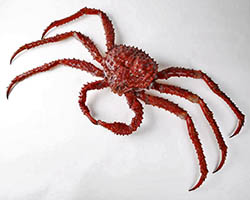
An invasion was starting. But just what kind of giants would invade the ocean? Giant crabs. Each year, giant king crabs march closer and closer to the Antarctic Peninsula into a delicate ecosystem that is not prepared to welcome them.
But why are these crabs moving closer to the Antarctic? Are they trying to satisfy a taste for destruction by eating all of the local starfish, sea cucumbers, and brittle stars? No, they are simply seeking cooler waters. The water temperatures from their original homes have warmed up too much for them to live in.
Be Wary of Warming
It's true, the earth is warming up. Between 1900 and 2000, global temperatures rose about 1.3 °F (0.7 °C). The U.S. National Oceanic & Atmospheric Administration's State of Climate ranked 2000 to 2010 as the warmest decade on record. But if you're trapped in the middle of something that the weather channel calls "a historical winter storm," you may have a hard time believing in the reality of global warming.
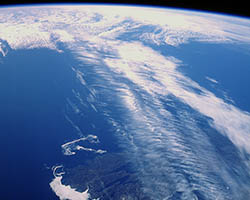
When thinking about global warming, think bigger. Think broader. The Earth is not just warming up—its entire climate is changing. A weirdly warm winter in one place may trigger a weirdly cool summer in another place.
The weather around the Earth is connected by winds that stream high up in the atmosphere. These jet streams circle around the Northern and Southern Hemispheres in specific patterns.
The difference between the polar and equatorial temperatures generally controls the patterns of the jet streams. Because of this, little changes in polar or equatorial temperatures can disrupt the flow of these high-altitude winds. These disruptions can bring out weird weather around the world.
Who Cares About a Few Degrees?
If someone cranked up the thermostat in your room by 1.3 °F, you probably wouldn't notice too much. Therefore, a 1.3 °F rise in global temperatures over the past century may not seem like a big deal. This small and slow rise in temperatures, however, is wreaking our planet’s wildlife.
Let's take a look at a few examples:
| Interrupted Symbiosis | |
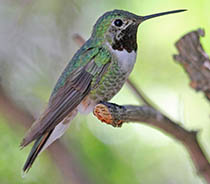 |
In the central United States, broad-tailed hummingbirds arrive at the end of winter. They've migrated all the way from Central America to breed. They've come for the local flower blooms, as the nectar gives the birds energy to mate and raise young. In return, the birds pollinate the flowers. As the earth warms, the flowers bloom earlier, but the hummingbirds arrive on the same date. The time between their arrival and the bloom is growing. If this continues, the birds may eventually miss the entire bloom. Then the hummingbirds and the flowers will not be able to reproduce. |
| Saving for a Rainy Day | |
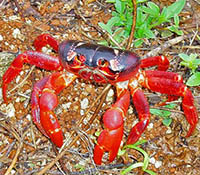 |
On a tropical island northwest of Australia, the wet season cues little red Christmas Island crabs. They exit their burrows and scuttle to the Indian Ocean shore. There, they mate before returning to their burrows. This mass migration depends on rain. The crabs won't migrate until 0.87 inches (22 millimeters) of rain falls. No migration means no mating. In areas where seasons are based on rainfall, climate change can cause droughts. Drought can endanger animals like the Christmas Island crab, which need the rain to mate. |
| Disappearing Emperors | |
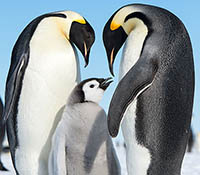 |
A small colony of emperor penguins has vanished from an island off the Antarctic Peninsula. Emperor penguins use the same areas year after year to mate and raise young. However, fewer penguins have been returning to those areas since the 1970s. During this time, the Antarctic Peninsula has been heating up. Changes in sea ice have affected fish and squid populations in the area, which means penguins have less food. Animals at the poles, like the Emperor penguin, have nowhere to go to stay cool. They already live in the coldest areas on Earth. Instead, they must make do with their current conditions or die. |
| Stairway to Extinction | |
|
|
The American pika, a tiny cousin of the rabbit, has been climbing the mountains in the central United States. American pikas usually live in cold alpine areas near or on the top of mountains. They need the cold, as pikas can die if exposed to air temperatures above 78 °F (25.5 °C) for six hours or longer. As global temperatures rise, pikas hike up to find cooler grounds. However, most pikas have already run out of mountain. They are forced to face the warming temperatures that have been creeping up from below. In the Great Basin, 8 out of 25 pika populations have already disappeared. |
| See You Later, Alligator | |
|
|
Many animal species need males and females to reproduce. For the alligator, warm temperatures may cause a shortage of fathers. The sex of a baby alligator is determined by the temperature of the egg. If the egg reaches temperatures greater than 86 °F (30 °C), it will most likely hatch as a female; below that, it will most likely be a male. Mother gators can choose where to build nests, giving them some say over egg temperature. As it warms, mother gators may not be able to find places cool enough for any male babies. Without many male alligators, alligator populations will shrink. |
Additional images via Wikimedia Commons. Nepal image by Alton Byers. Hummingbird by DickDaniels. Christmas Island Crab by Rebecca Dominguez. Emperor penguins by Christopher Michel. American pika by Walter Siegmund.
Read more about: Switching of Seasons
Bibliographic details:
- Article: Weird Weather
- Author(s): Dr. Biology
- Publisher: Arizona State University School of Life Sciences Ask A Biologist
- Site name: ASU - Ask A Biologist
- Date published:
- Date accessed:
- Link: https://askabiologist.asu.edu/weird-weather
APA Style
Dr. Biology. (). Weird Weather. ASU - Ask A Biologist. Retrieved from https://askabiologist.asu.edu/weird-weather
Chicago Manual of Style
Dr. Biology. "Weird Weather". ASU - Ask A Biologist. . https://askabiologist.asu.edu/weird-weather
Dr. Biology. "Weird Weather". ASU - Ask A Biologist. . ASU - Ask A Biologist, Web. https://askabiologist.asu.edu/weird-weather
MLA 2017 Style

The weather is getting a bit wacky in some places. In Nepal, the temperature is warming and melting glaciers.
Be Part of
Ask A Biologist
By volunteering, or simply sending us feedback on the site. Scientists, teachers, writers, illustrators, and translators are all important to the program. If you are interested in helping with the website we have a Volunteers page to get the process started.

